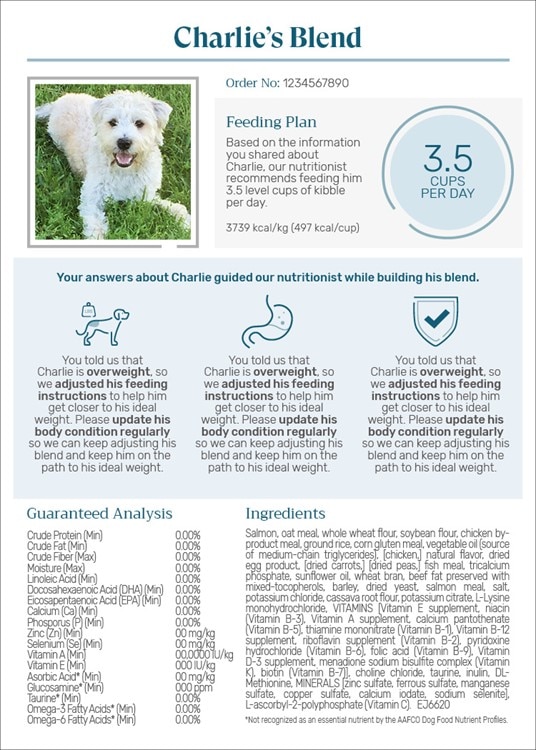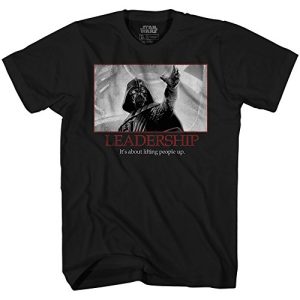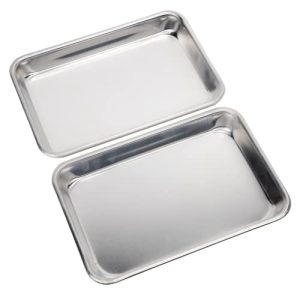Contents
- Understanding the Science behind the Dog Feeding Chart
- What is a Dog Feeding Chart?
- Why is it Important to Understand the Science behind the Dog Feeding Chart?
- How is the Dog Feeding Chart Developed?
- Factors Considered in Developing Dog Feeding Charts
- The Nutritional Needs of Dogs
- Understanding Macronutrients for Dogs
- The Role of Energy in Dog Nutrition
- Determining the Optimal Feeding Amount for a Dog
- Considering Special Dietary Requirements for Dogs
Have you ever found yourself perplexed by the numbers and measurements on your dog’s feeding chart? Look no further, as we bring you “Understanding the Science behind the Dog Feeding Chart.” This comprehensive guide will decode the hidden secrets behind those perplexing figures, shedding light on the scientific principles and nutritional calculations that drive the canine feeding recommendations. With this newfound understanding, you will confidently nourish your furry friend, ensuring their optimal health and well-being.
Understanding the Science behind the Dog Feeding Chart
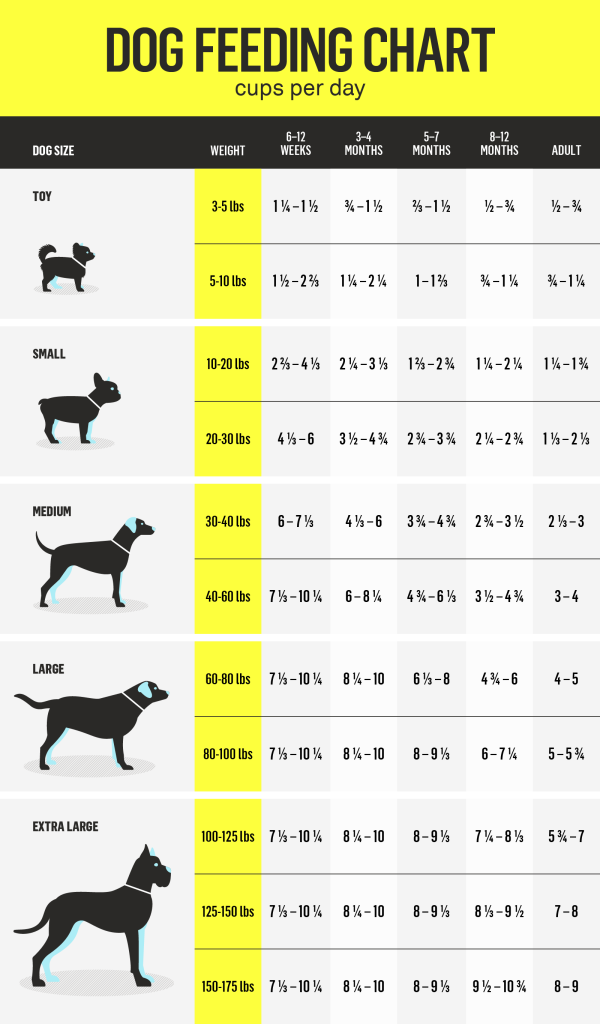
What is a Dog Feeding Chart?
A dog feeding chart is a helpful tool that provides owners with guidelines on how much food their dogs should consume based on various factors such as age, weight, activity level, and breed size. It typically consists of a table or chart that outlines the recommended daily amount of food for a dog based on its specific needs. The chart serves as a reference to ensure dogs receive proper nutrition and maintain a healthy weight.
Why is it Important to Understand the Science behind the Dog Feeding Chart?
Understanding the science behind a dog feeding chart is crucial because it allows owners to make informed decisions about their pet’s nutrition. By understanding the fundamental principles and factors considered in developing the chart, owners can ensure that their dogs receive adequate nutrition, prevent overfeeding or underfeeding, maintain an optimal body condition, and support overall health and well-being. Additionally, by understanding the science, owners can minimize the risk of nutritional imbalances and deficiencies that could lead to health problems in their furry friends.
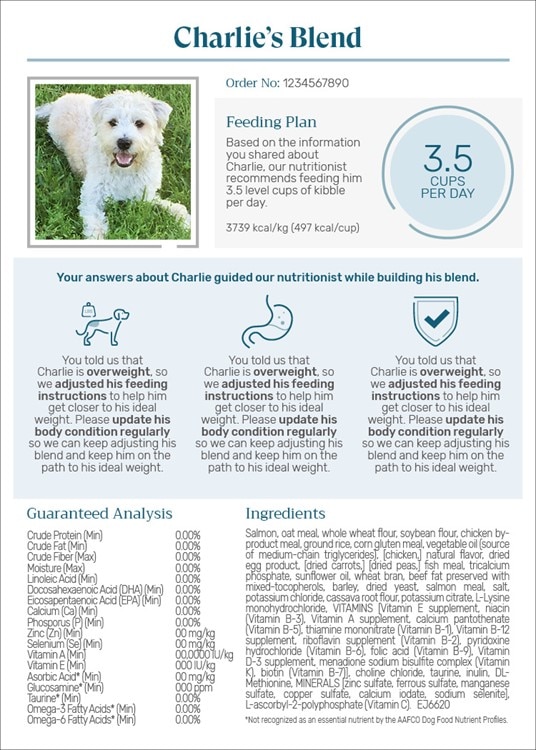
How is the Dog Feeding Chart Developed?
Dog feeding charts are developed through a comprehensive process that involves scientific research, the involvement of veterinarians and animal nutritionists, and the evaluation of dog food products. The goal is to establish a framework that meets the nutritional needs of different dogs based on age, breed, activity level, and other factors. Baseline nutritional requirements are determined, and feeding guidelines are established to ensure that dogs receive the appropriate amount of nutrients to thrive.
Factors Considered in Developing Dog Feeding Charts
Several factors are taken into consideration when developing dog feeding charts. These factors are crucial in determining the optimal amount of food a dog should consume to meet its nutritional requirements. Some of the main factors include:
-
Age and Life Stage: Dogs have different nutritional requirements depending on their age and life stage. Puppies, adult dogs, and senior dogs all have unique dietary needs, and feeding charts are tailored to address these specific requirements.
-
Breed Size and Weight: Size and weight play a significant role in a dog’s metabolism and nutritional needs. Large breed dogs, for example, may have different feeding guidelines compared to small breed dogs due to their growth rates and predisposition to certain health conditions.
-
Activity Level and Exercise: Dogs with higher activity levels and more exercise typically require more calories to meet their energy needs. Feeding charts take into account the activity level of the dog to ensure that they receive the right amount of food to fuel their daily activities.
-
Metabolism and Resting Energy Requirements: Dogs’ metabolism and resting energy requirements can vary, and it is essential to consider these factors when developing a feeding chart. A dog with a higher metabolic rate may require more calories than one with a slower metabolism.
-
Health Conditions and Special Needs: Dogs with specific health conditions or special dietary needs require tailored feeding guidelines. Feeding charts may need to be adjusted to accommodate these requirements, such as feeding a dog with food allergies or sensitivities a specialized diet.

The Nutritional Needs of Dogs
To understand dog feeding charts fully, it is essential to comprehend the nutritional needs of dogs. Dogs, like humans, require specific nutrients to thrive and maintain good health. The key essential nutrients for dogs include proteins, carbohydrates, fats, vitamins, minerals, and water. These nutrients play vital roles in various bodily functions and support the overall well-being of dogs.
-
Protein Requirements for Dogs: Protein is crucial for dogs as it contributes to the growth, repair, and maintenance of their muscles, tissues, and organs. Dog feeding charts consider the appropriate protein levels for different breeds and life stages.
-
Carbohydrate Requirements for Dogs: While dogs are primarily carnivores, they can still benefit from carbohydrates. Carbohydrates provide a source of energy and fiber, aiding in digestion. The feeding chart determines the ideal carbohydrate levels for dogs based on their needs.
-
Fat Requirements for Dogs: Fats are an essential energy source for dogs and play a vital role in maintaining healthy skin and coat. Feeding charts consider the appropriate fat levels to ensure dogs receive the necessary fatty acids for optimal health.
-
Vitamin and Mineral Requirements for Dogs: Vitamins and minerals are essential for various physiological processes in dogs. Feeding charts take into account the vitamins and minerals necessary for a well-rounded diet and overall health.
-
Water and Hydration Needs for Dogs: Water is fundamental for all living beings, and dogs are no exception. It is essential to ensure dogs have access to clean, fresh water at all times. Feeding charts emphasize the importance of hydration for dogs’ health and well-being.
Understanding Macronutrients for Dogs
Macronutrients, including proteins, carbohydrates, and fats, play a central role in dog nutrition. Understanding these macronutrients is essential for interpreting the feeding chart effectively and providing dogs with a balanced diet.
-
Role of Protein in Dog Nutrition: Protein is vital for dogs as it serves as the building blocks for their muscles, organs, enzymes, and hormones. The feeding chart considers the appropriate protein levels necessary for a dog’s overall health and wellness.
-
Role of Carbohydrates in Dog Nutrition: Carbohydrates provide dogs with energy and are an important source of dietary fiber. The feeding chart provides guidance on the appropriate carbohydrate levels to support a dog’s daily activities and maintain a healthy digestive system.
-
Role of Fats in Dog Nutrition: Fats provide dogs with a concentrated source of energy and play a crucial role in supporting their skin and coat health. The feeding chart ensures that dogs receive the right amount of fats for optimal nutrition.
-
Importance of Balance among Macronutrients: It is important to maintain a proper balance among macronutrients in a dog’s diet. Too much or too little of any macronutrient can negatively impact a dog’s overall health and well-being. Dog feeding charts emphasize the importance of balance and proportion in the nutrient composition of a dog’s diet.
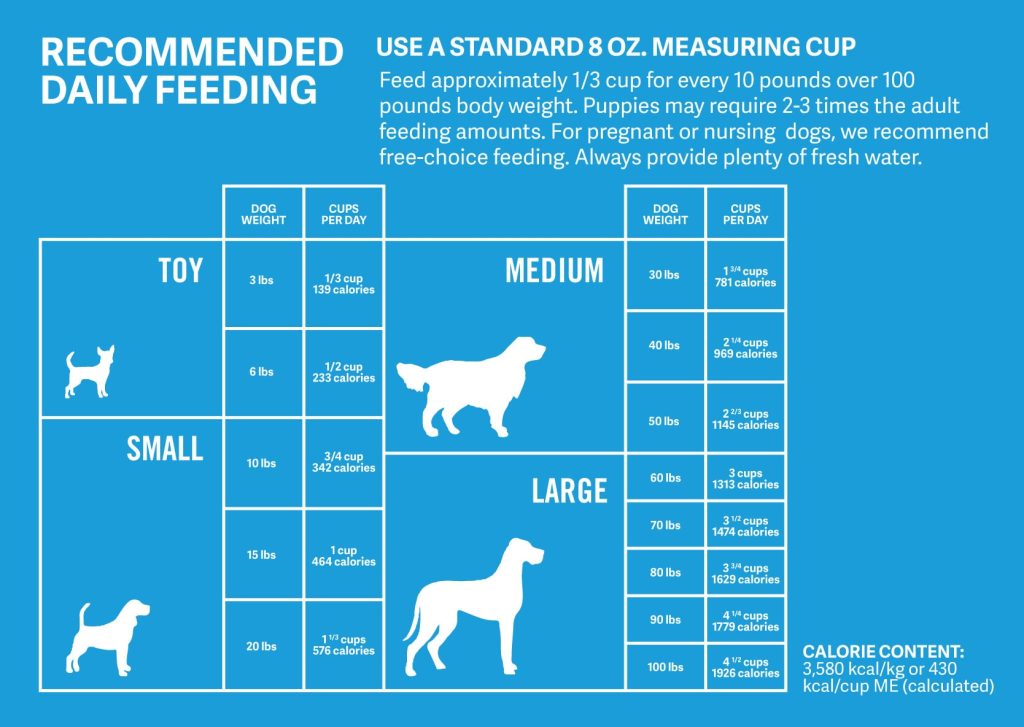
The Role of Energy in Dog Nutrition
Energy is a vital component of a dog’s diet and plays a crucial role in maintaining their overall health and well-being. Understanding the concept of energy and how it is measured in dog food is essential for interpreting the feeding chart accurately.
-
Understanding the Concept of Energy: Energy, in the context of dog nutrition, refers to the calories derived from food that provide fuel for bodily processes and activities. The energy content of dog food is measured in calories or kilocalories, which represent the amount of heat energy required to raise the temperature of one kilogram of water by one degree Celsius.
-
Measuring Energy in Dog Food: The energy content of dog food is measured using laboratory analysis. This analysis determines the caloric value of the food, which is then included in the feeding chart to help owners understand the energy content of different dog food products.
-
Determining Energy Requirements for Dogs: A dog’s energy requirements depend on various factors such as age, weight, activity level, and overall health. The feeding chart takes these factors into account to determine the optimal amount of calories a dog needs to consume each day.
Determining the Optimal Feeding Amount for a Dog
Determining the optimal feeding amount for a dog involves considering several factors. Feeding charts provide a starting point for determining the daily amount of food a dog should consume, but adjustments may be necessary based on individual circumstances.
-
Factors Affecting Feeding Amount: Factors such as age, weight, activity level, and overall health can affect a dog’s feeding amount. Dogs with higher activity levels may require more food, while older dogs or those with specific health conditions may need adjustments to their feeding guidelines.
-
Calculating Energy Needs: Calculating a dog’s energy needs is a crucial step in determining the optimal feeding amount. This calculation involves considering the dog’s weight, activity level, and metabolic rate to estimate the number of calories the dog requires each day.
-
Feeding Guidelines as a Starting Point: Feeding charts provide general guidelines on the daily amount of food a dog should consume based on their weight and activity level. However, it is important to remember that these guidelines are not one-size-fits-all, and adjustments may be necessary depending on individual circumstances.
-
Monitoring and Adjusting the Feeding Amount: It is important to monitor a dog’s body condition and weight regularly and make adjustments to the feeding amount if needed. Feeding charts serve as a reference, but owners should consider their dog’s individual needs and make changes accordingly to ensure they are receiving the right amount of nutrition.
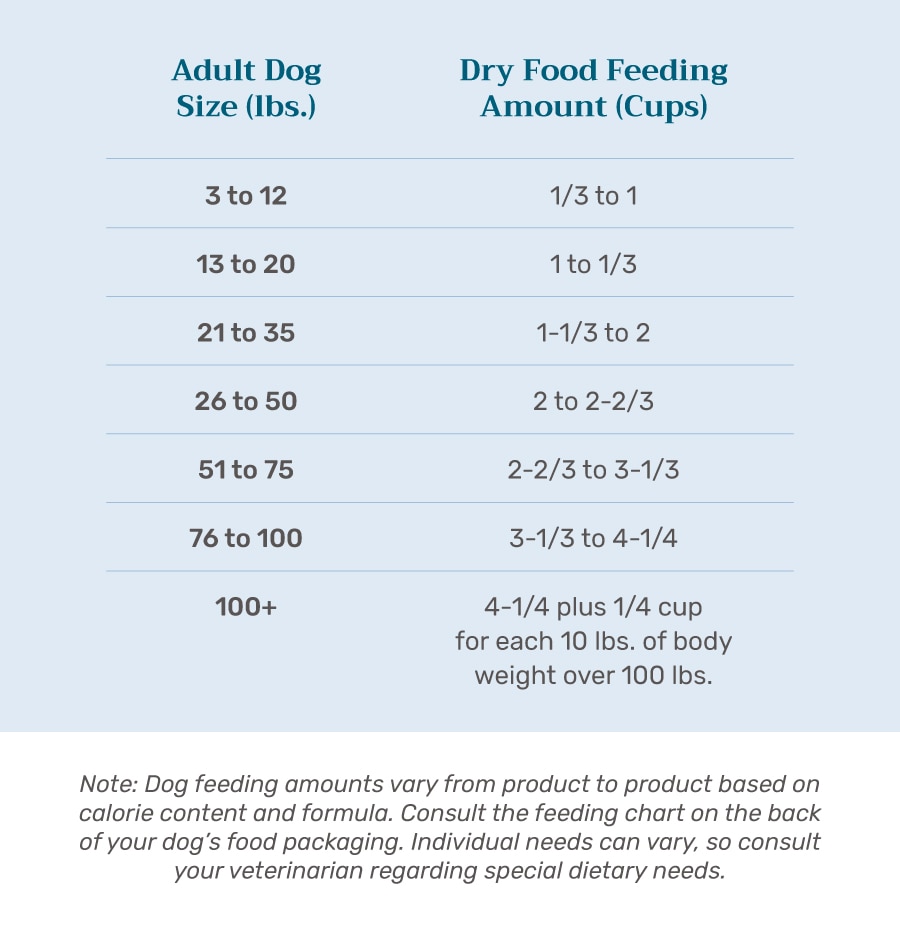
Considering Special Dietary Requirements for Dogs
Some dogs may have special dietary requirements due to allergies, intolerances, or specific medical conditions. Feeding charts can be customized to accommodate these special needs and ensure that dogs receive appropriate nutrition.
-
Food Allergies and Intolerances in Dogs: Some dogs may have food allergies or intolerances that require a specialized diet. Feeding charts can be adjusted to exclude specific ingredients or incorporate hypoallergenic alternatives to meet the dog’s dietary needs.
-
Special Dietary Needs for Dogs with Medical Conditions: Dogs with medical conditions such as kidney disease, diabetes, or obesity may require a modified diet to manage their condition effectively. Feeding charts can be customized to meet these specific dietary needs and support the dog’s overall health.
-
Customizing the Feeding Chart for Specific Requirements: Feeding charts can be customized to accommodate specific dietary requirements. This may involve adjusting the portion sizes, selecting appropriate dog food formulas, or incorporating supplements based on the dog’s individual needs.
-
Transitioning to a New Diet: Guidelines and Tips: When transitioning a dog to a new diet, feeding charts can provide guidance on portion sizes and gradual transitions to avoid digestive upset. Following the recommended guidelines during the transition process can help ensure a smooth adjustment to the new diet.
In conclusion, understanding the science behind a dog feeding chart is essential for providing dogs with proper nutrition. Feeding charts take into account various factors such as age, weight, activity level, and specific health conditions to determine the optimal amount of food a dog should consume. By following these guidelines and making necessary adjustments based on individual circumstances, owners can ensure their dogs receive adequate nutrition and support their overall health and well-being.

